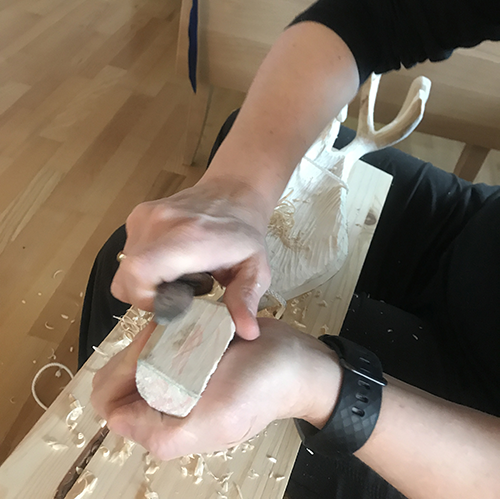Editorial
Special issue on embodied making and learning
DOI:
https://doi.org/10.7577/formakademisk.3934Abstract
This special issue on embodied making and learning is dedicated to aspects of embodied cognition that goes on in the field of art, craft and design. The contributors to this issue were invited from the Embodied Making and Learning (EMAL) research group at the University of South-Eastern Norway, where aspects of learning in creative practices have been studied from many different angles throughout the institutions nearly 80 years existence, and amplified since the formation of the group in 2014. With its 50 members, divided into five thematic clusters related to embodied making and learning, this research group is one of the largest in the field. It involves both experienced and early career researchers, as well as experienced university teachers, from several disciplines.
References
Dunin-Woyseth, H., & Michl, J. (2001). Towards a disciplinary identity of the making professions: an introduction. In H. Dunin-Woyseth & J. Michl (Eds.), The Millennium Reader. Oslo School of Architecture.
Groh, J. M. (2014). Making space: How the brain knows where things are. Harvard University Press.
Gulliksen, M. S. (2017). Making matters? Unpacking the role of practical aesthetic making activities in the general education through the theoretical lens of embodied learning. Cogent Education, 4(1), 1415108.
https://doi.org/10.1080/2331186X.2017.1415108
Newen, A., de Bruin, L. & Gallagher, S. (2018). Introduction: 4E Cognition: Historical roots, key concepts, and central issues. In: A. Newen, L. de Bruin and S. Gallagher, 2018. (Eds.) The Oxford Handbook of 4E Cognition. Oxford University Press, (pp. 3-8).
Sawyer, R. K., (Ed.) (2014). The Cambridge handbook of the learning sciences. Cambridge University Press.
Schilhab, T. (2017). Derived embodiment in abstract language. Springer.

Downloads
Published
How to Cite
Issue
Section
License
Copyright (c) 2020 Camilla Groth, Kirstine Riis, Marte Sørebø Gulliksen

This work is licensed under a Creative Commons Attribution-NoDerivatives 4.0 International License.
Authors who publish with this journal agree to the following terms:
- Authors retain copyright and grant the journal right of first publication with the work simultaneously licensed under a Creative Commons Attribution 4.0 License that allows others to share the work with an acknowledgement of the work's authorship and initial publication in this journal.
- Authors are able to enter into separate, additional contractual arrangements for the non-exclusive distribution of the journal's published version of the work (e.g., post it to an institutional repository or publish it in a book), with an acknowledgement of its initial publication in this journal.
- Authors are permitted and encouraged to post their work online (e.g., in institutional repositories or on their website) prior to and during the submission process, as it can lead to productive exchanges, as well as earlier and greater citation of published work (See The Effect of Open Access).
- The author(s) must manage their economic reproduction rights to any third party.
- The journal makes no financial or other compensation for submissions, unless a separate agreement regarding this matter has been made with the author(s).
- The journal is obliged to archive the manuscript (including metadata) in its originally published digital form for at least a suitable amount of time in which the manuscript can be accessed via a long-term archive for digital material, such as in the Norwegian universities’ institutional archives within the framework of the NORA partnership.
The material will be published OpenAccess with a Creative Commons 4.0 License which allows anyone to read, share and adapt the content, even commercially under the licence terms:
This work needs to be appropriately attributed/credited, a link must be provided to the CC-BY 4.0 licence, and changes made need to be indicated in a reasonable manner, but not in any way that suggests that the licensor endorses you or your use.



